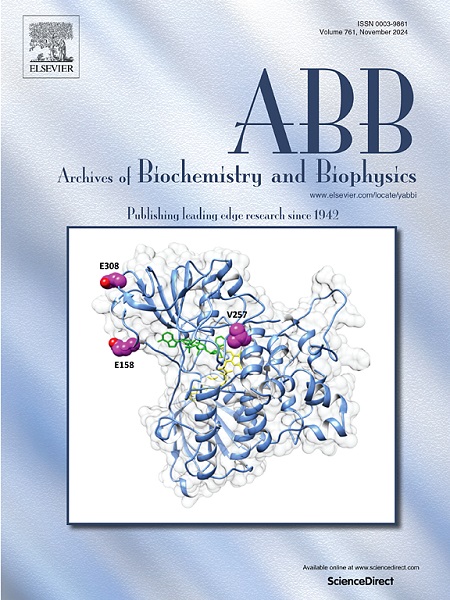Methylation of immature small ribosomal subunits by methyltransferases conferring aminoglycoside resistance
IF 3.8
3区 生物学
Q2 BIOCHEMISTRY & MOLECULAR BIOLOGY
引用次数: 0
Abstract
Aminoglycosides are broad-spectrum antibiotics critical to clinical treatment, but the emergence of bacterial resistance, particularly through 16S rRNA methyltransferases, has compromised their efficacy. These enzymes, originally discovered in natural aminoglycoside producers, confer resistance by methylating nucleotides G1405 and A1408 in 16S rRNA, blocking antibiotic binding to the ribosome. This study investigated the binding affinities and methylation activities of 16S rRNA methyltransferases KamB, NpmA, RmtA, RmtC, and Sgm with immature 30S ribosomal subunits from E. coli strains lacking RimM and YjeQ ribosomal assembly factors. Binding affinities to mature 30S ribosomal subunits and immature 30S assembly forms isolated from ΔyjeQ and ΔrimM strains were determined by microscale thermophoresis and interactions were further validated with in vitro pull-down assays. Methylation of immature 30S subunits was examined with primer extension on 16S rRNA extracted from methylation assays in vitro and from cells with immature 30S subunits expressing 16S rRNA methyltransferases in vivo, showing successful methylation of target nucleotides in both experimental systems. The results reveal that aminoglycoside resistance methyltransferases are capable to bind and modify late-stage immature 30S ribosomal subunits pointing to possibility that the resistance to aminoglycoside antibiotics is installed and established before the full maturation of ribosomal 30S subunit.

求助全文
约1分钟内获得全文
求助全文
来源期刊

Archives of biochemistry and biophysics
生物-生化与分子生物学
CiteScore
7.40
自引率
0.00%
发文量
245
审稿时长
26 days
期刊介绍:
Archives of Biochemistry and Biophysics publishes quality original articles and reviews in the developing areas of biochemistry and biophysics.
Research Areas Include:
• Enzyme and protein structure, function, regulation. Folding, turnover, and post-translational processing
• Biological oxidations, free radical reactions, redox signaling, oxygenases, P450 reactions
• Signal transduction, receptors, membrane transport, intracellular signals. Cellular and integrated metabolism.
 求助内容:
求助内容: 应助结果提醒方式:
应助结果提醒方式:


